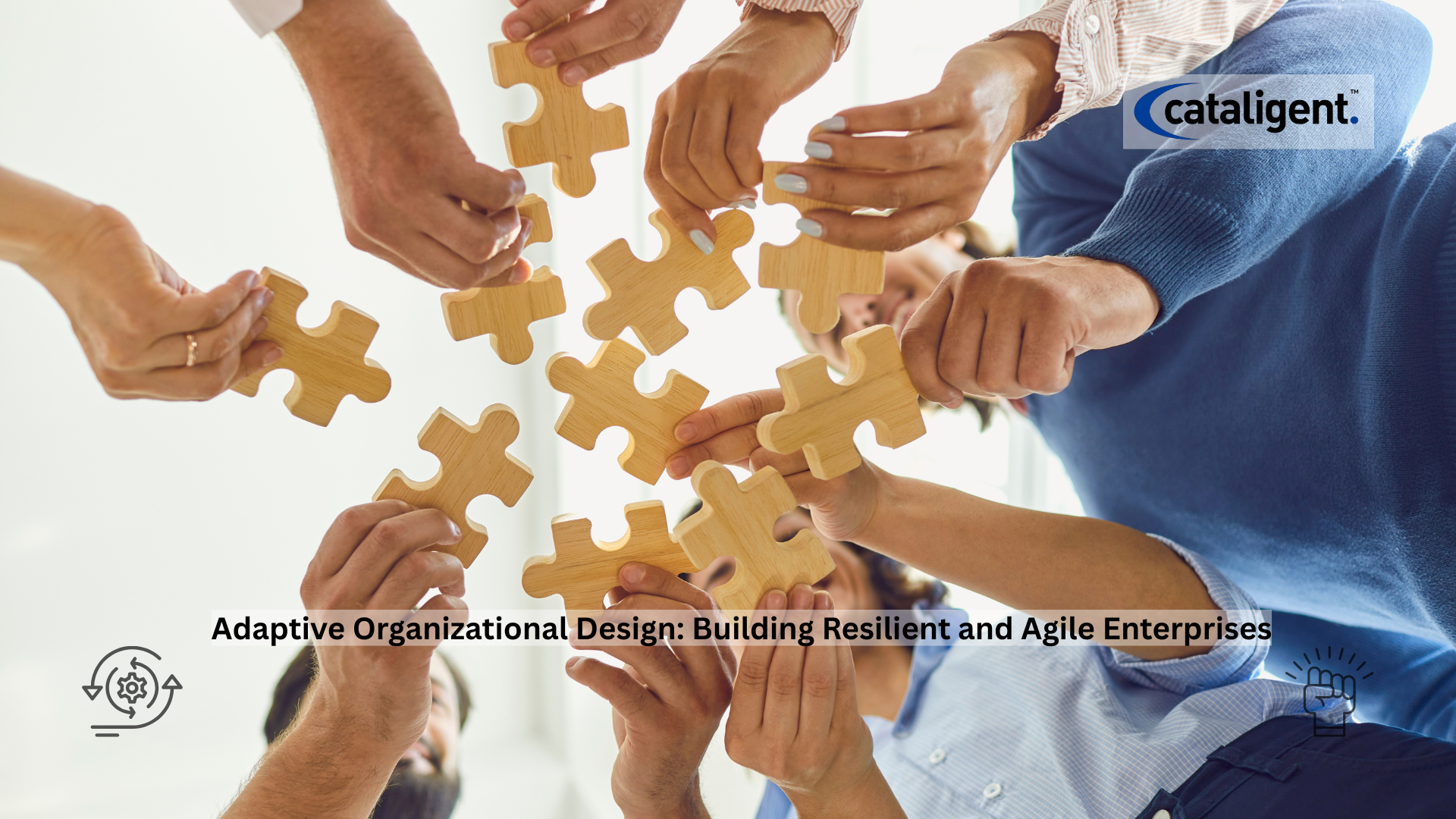Introduction: In rapidly evolving markets, static organizational structures are no longer sufficient. Businesses must adopt adaptive organizational design to remain competitive, resilient, and responsive. Business transformation plays a crucial role here by providing the strategic vision, tools, and processes necessary to shift the organization toward agility and innovation. By aligning structural changes with overall transformation goals, organizations can ensure that adaptation is not just reactive but a strategic enabler of growth.
What is Adaptive Organizational Design? Adaptive organizational design is the process of structuring an organization so it can respond efficiently to internal and external changes. It involves flexible hierarchies, cross-functional teams, decentralized decision-making, and a focus on skill mobility. Business transformation supports this by providing frameworks, technology, and best practices that guide organizations in redesigning processes, roles, and workflows to be more responsive and effective.
Role of Business Transformation in Adaptive Organizational Design:
- Strategic Alignment: Business transformation ensures that organizational changes align with long-term strategic goals. It guides leadership in defining priorities, setting objectives, and ensuring that adaptive structures support the company’s vision and growth plans.
- Process Optimization: Transformation initiatives streamline operations and eliminate inefficiencies, enabling adaptive structures to operate smoothly. Optimized processes provide the backbone for agile workflows and decision-making.
- Technology Enablement: Business transformation integrates digital platforms and tools, such as Cataligent’s CAT4, to facilitate dynamic role management, cross-functional collaboration, and real-time performance tracking, making adaptive design practical and effective.
- Culture and Change Management: Transformation drives cultural shifts, fostering flexibility, empowerment, and innovation. This cultural foundation is essential for adaptive design to succeed, as it encourages employee engagement, accountability, and proactive problem-solving.
Why Adaptive Organizational Design is Critical:
- Resilience in Dynamic Environments: Adaptive organizations can respond to market shifts, economic fluctuations, and technological disruptions without losing operational continuity. Business transformation provides the roadmap and frameworks for implementing these resilient structures.
- Accelerated Innovation: Decentralized decision-making and empowered teams allow organizations to implement ideas faster and bring innovations to market more quickly. Transformation initiatives help identify areas for innovation and provide tools to execute them efficiently.
- Employee Engagement and Retention: Flexible structures and empowerment create a sense of ownership and motivation among employees. Business transformation programs often include training, communication strategies, and role clarity to enhance engagement and reduce turnover.
- Strategic Agility: Adaptive design enables organizations to pivot strategies efficiently in response to market trends and customer demands. Business transformation aligns these pivots with broader objectives, ensuring changes contribute to long-term success.
Key Benefits of Adaptive Organizational Design:
- Enhanced Agility: Organizations can quickly respond to market changes, customer needs, and internal challenges, with transformation initiatives providing guidance and support.
- Increased Innovation: Empowered teams contribute new ideas, accelerate project execution, and improve problem-solving, aligned with strategic transformation objectives.
- Improved Employee Satisfaction: Flexibility and autonomy increase engagement, motivation, and retention, supported by change management and transformation programs.
- Operational Efficiency: Dynamic structures optimize resource use, eliminate redundancies, and streamline workflows, guided by transformation-led process improvements.
- Strategic Alignment: Adaptive design ensures that organizational changes support long-term business goals and transformation initiatives.
How Cataligent Supports Adaptive Organizational Design: Cataligent’s CAT4 platform provides tools and frameworks to implement adaptive organizational structures effectively, in alignment with business transformation objectives:
- Dynamic Role Management: CAT4 allows organizations to define flexible roles and responsibilities, enabling employees to take on multiple functions based on organizational needs and project priorities, supporting transformation goals.
- Decentralized Decision-Making: CAT4 supports distributed decision authority with role-based access controls, ensuring that teams can act autonomously while remaining aligned with organizational objectives, enhancing agility.
- Cross-Functional Collaboration: The platform enables seamless collaboration across departments, breaking down silos and promoting knowledge sharing for faster and more informed decision-making.
- Real-Time Performance Monitoring: CAT4 provides dashboards that track team performance, resource allocation, and project progress in real time, helping organizations identify bottlenecks and adjust structures proactively.
- Scenario Planning and Organizational Simulation: Cataligent allows leaders to model different organizational structures, test potential changes, and predict outcomes, ensuring the best adaptive strategy is implemented.
Conclusion: Adaptive organizational design is essential for businesses seeking to thrive in unpredictable and rapidly changing markets. Business transformation plays a central role in this process, providing the vision, frameworks, and tools necessary for agile structures and empowered teams. Cataligent’s CAT4 platform ensures that adaptive design is implemented effectively, helping organizations become resilient, innovative, and strategically aligned.
Transform your organization into an agile, resilient enterprise with Cataligent’s CAT4 platform. Request a demo today and embrace the power of adaptive organizational design supported by strategic business transformation.

